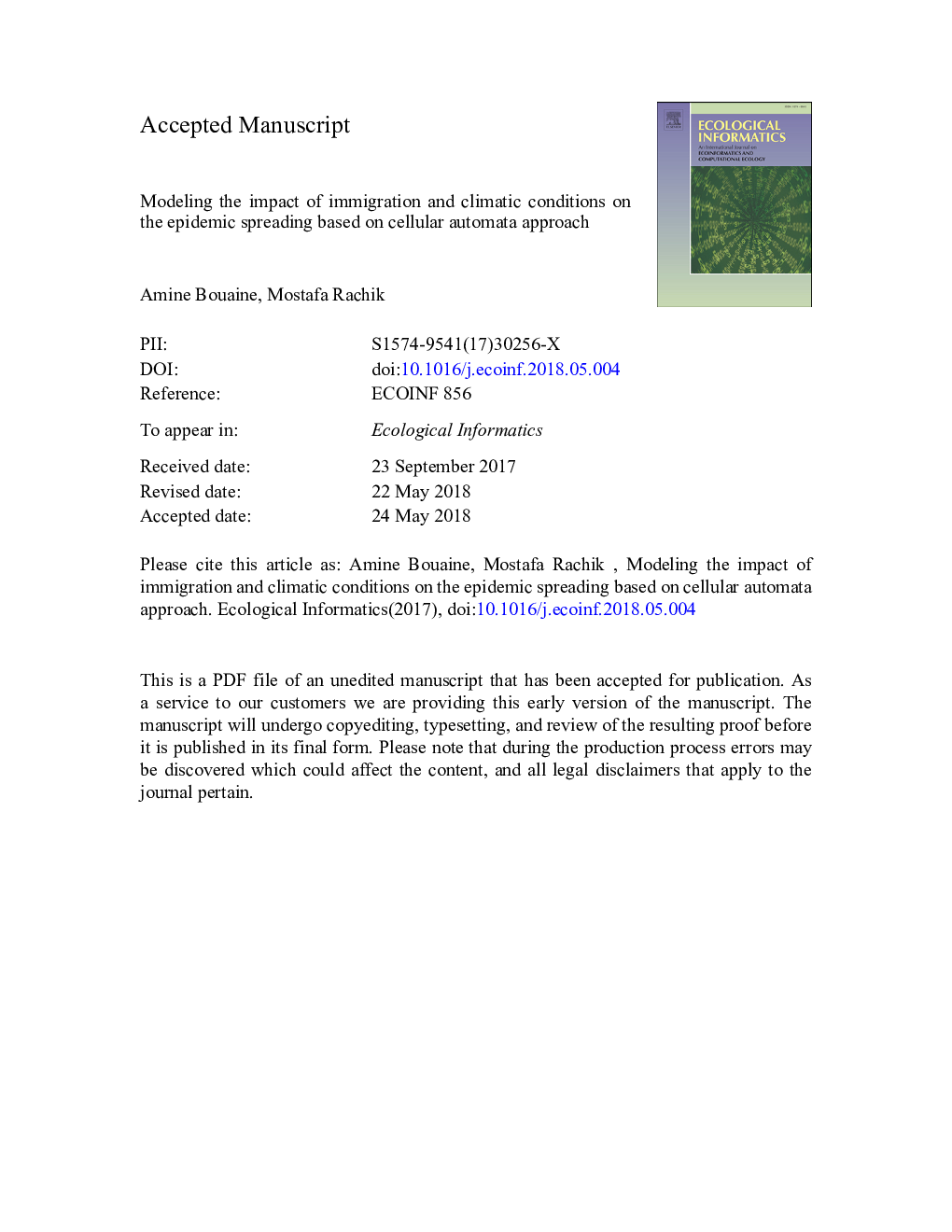| Article ID | Journal | Published Year | Pages | File Type |
|---|---|---|---|---|
| 8845795 | Ecological Informatics | 2018 | 32 Pages |
Abstract
This study has three objectives. First, it aims to investigate epidemic immigration by developing spatiotemporal models based on cellular automata approach. We have proposed delayed and nonlocal transition functions which depend not only on the previous states, but also on several past states. Furthermore, the cell state depends on the non-neighbor cells in addition to the neighbor ones. Second, this study aims to explore the impact of the neighborhood architecture on the epidemic diffusion. Third, this study also endeavors to examine the impact of the virulence variation on the epidemic spreading. In this context, we have considered the virulence variation from one region to another, and from one season to another and we have emphasized its role as a decisive parameter. On top of that, we have developed basic and useful online application called the “Epidemic Application” for predicting the spread of diseases over time and space, assessing the effect of different spatial parameters, and providing adequate spatiotemporal simulations in order to help health organizations. Moreover, the suggested approach can be implemented in a variety of scientific and ecological fields.
Related Topics
Life Sciences
Agricultural and Biological Sciences
Ecology, Evolution, Behavior and Systematics
Authors
Amine Bouaine, Mostafa Rachik,
